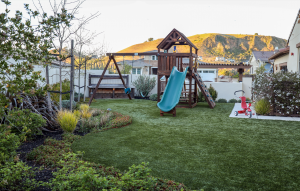Feng Shui In The Landscape : J. Montgomery Designs, a Landscape Architecture Firm
Feng Shui In The Landscape ~ J. Montgomery Designs, a Landscape Architecture Firm
Feng Shui (translating as Wind-Water) appeared in China more than 6,000 years ago. Feng Shui recognizes eight magnetic directions, with corresponding elements and themes, which if used in design are thought to promote the flow of Qi (Chi), or beneficial energy through a space. A professional landscape architect will want to promote flow and ambiance and Feng Shui has many principles which can enhance the experience within the landscape.
There are multiple schools of Feng Shui, and the Compass School is most commonly used in designing around an existing structure, like a house. The first step of compass Feng Shui involves establishing a center point from which the eight directions will extend. A specialized magnetic compass (Luopan) may be used for establishing these directions, or one can use a regular magnetic compass to establish directions in a more general manner. The first step is establishing the direction of the front door, the center of the home and surrounding yard.
Blueprints or a sketch of the home’s floor plan can be used to determine the approximate center of any space. From that point, divide the property into eight evenly spaced directions (N, NE, E, SE, S, SW, W, NW) stemming from a central point. In the landscape, accuracy tends to blur as these directions cover a broad area, so don’t worry if it's not certain where South and Southwest exactly divide. If a home has a really large backyard, perhaps consider giving it its own center in this way, but this will make it its own space rather than an extension of the interior.
Once it's been established which part of the landscape lands in which direction, the fun part begins! The energy associated with each direction can be enhanced in different ways, with natural elements, specific colors, or spatial purpose. For example, west is the direction associated with creativity and children, so it might be the ideal spot for a play area, while northeast, associated with spirituality, might be the best location for a meditative bench or reading nook. If clients are planning to add a garden, choosing plants that correspond with directional colors would be another way to go. There are many interpretations, and we won’t pretend to have all the answers, but deeply enjoy incorporating these elements as per our clients’ request.
While the 8 Bagua directions are certainly at the heart of Feng Shui, there are other design principles that are recognized in this tradition that can be incorporated, even if a landscape is not set up in this way. Here are some concepts in Landscape Architecture, which will surely help enhance any outdoor living experience.
The importance of doors in Feng Shui is famous, and as in other forms of design, doors can be powerful. In Feng Shui, doors and gates serve as portals for Qi to flow through. Incorporating a directional color or element into a door or gate can create a presence when entering a home or landscape.
While really enjoying a space, it goes without saying that you don’t want to think about leaving. While blocking an exit is also undesired, Feng Shui often softens or shields exits, particularly if they are within view of a gathering or resting area. For example, vining florals can be placed in a position to shield the path of the gate, creating a distraction for the eye and softening the hard lines of the exit behind them.
Movement and lightness within a landscape are crucial elements, and Feng Shui promotes the inclusion of softening elements to promote energy flow in places that feel dull or stagnant. Grasses can create a perfect screen or add interest with their movement in the slightest breeze.
In contrast to softening elements, introducing bold weight and structure in the right location is sometimes necessary. Tiered metal planter boxes with their calming but strong presence would be perfect in a western Bagua sector.
We hope that these age-old principles can be used at home in the landscape. More and more, outdoor spaces are becoming a part of every home, and can be used to extend the existing interior Feng Shui. If this is still a new concept, go ahead and try out an element in its corresponding sector to see if it enhances life. Trying new things is adventurous and fun. Good luck!
Debbie Blumhardt
J. Montgomery Designs
+1 925-820-8884
hello@jmontgomerydesigns.com
Visit us on social media:
LinkedIn
Instagram
Other
Legal Disclaimer:
EIN Presswire provides this news content "as is" without warranty of any kind. We do not accept any responsibility or liability for the accuracy, content, images, videos, licenses, completeness, legality, or reliability of the information contained in this article. If you have any complaints or copyright issues related to this article, kindly contact the author above.



